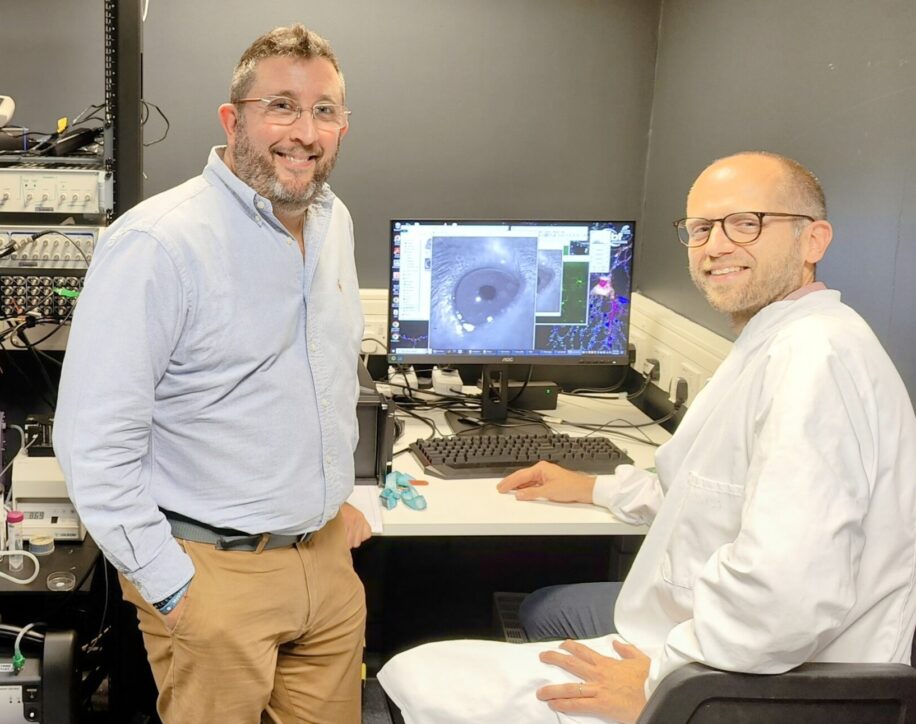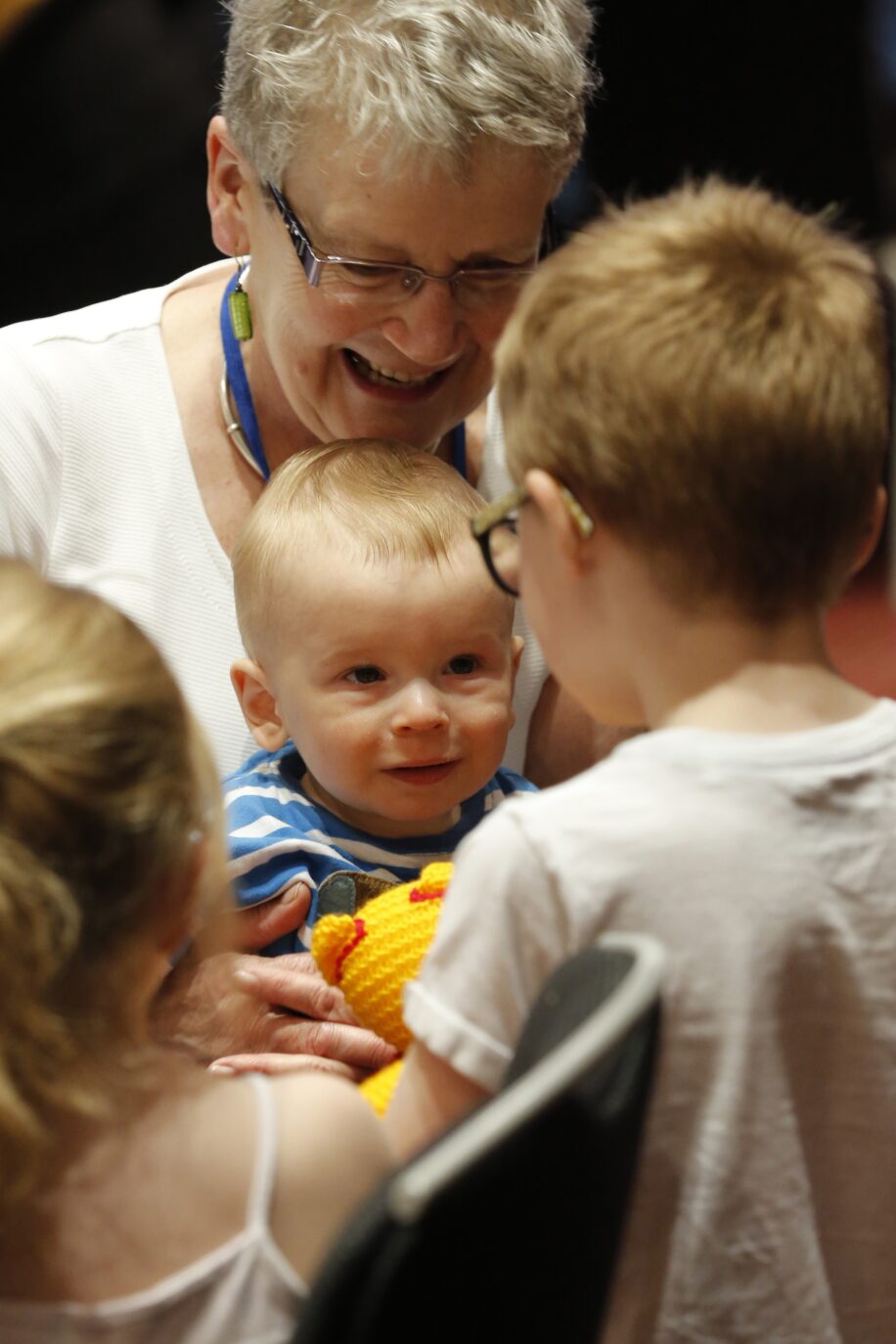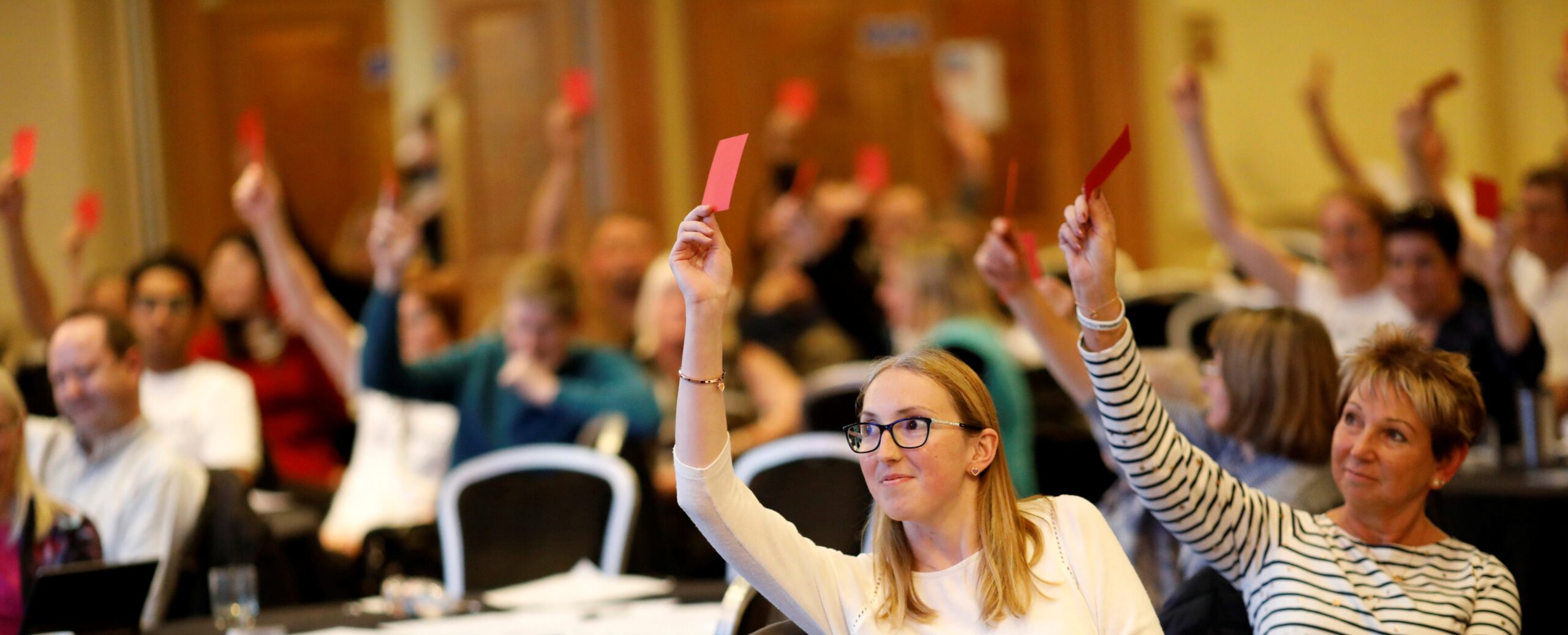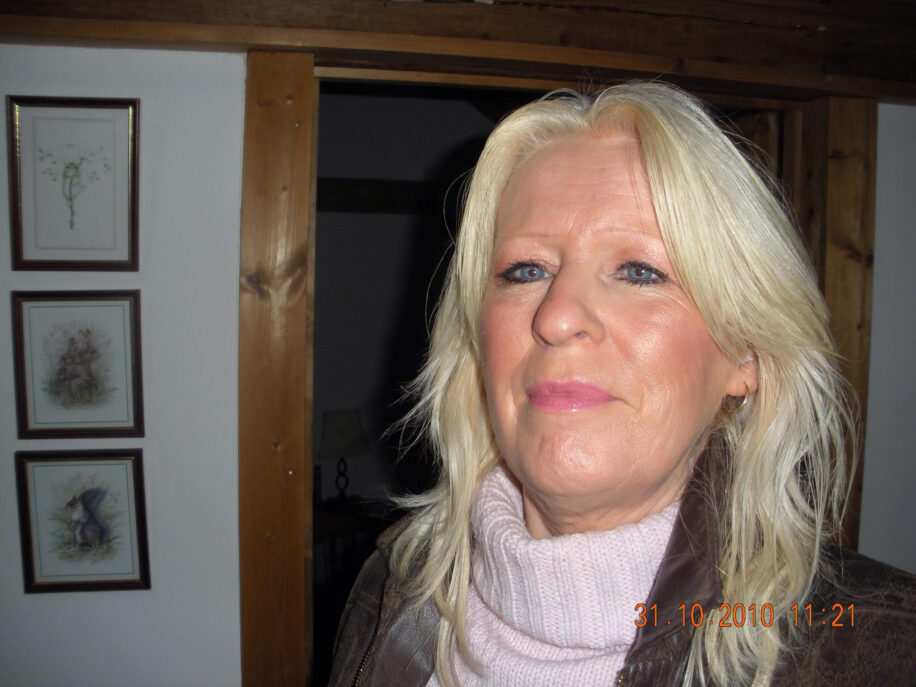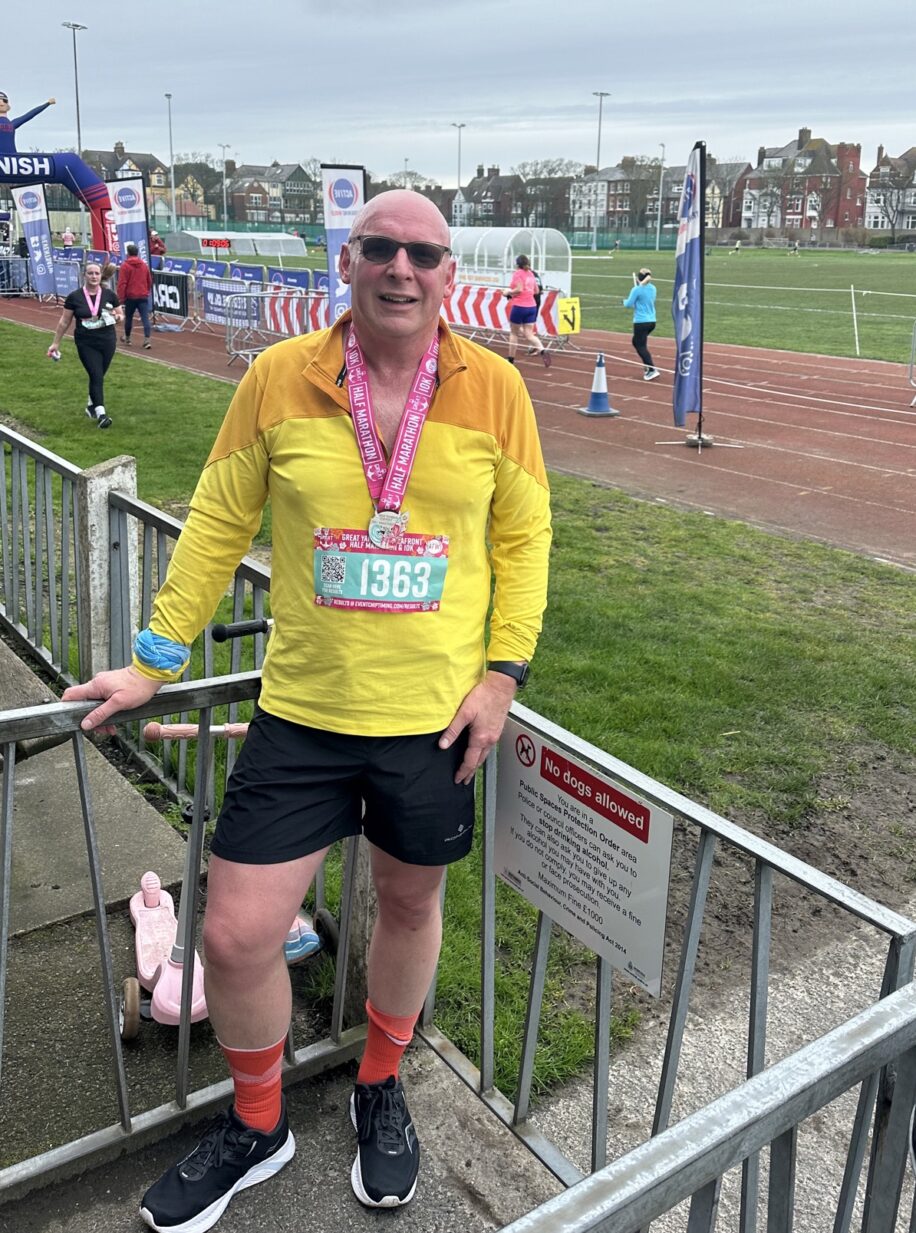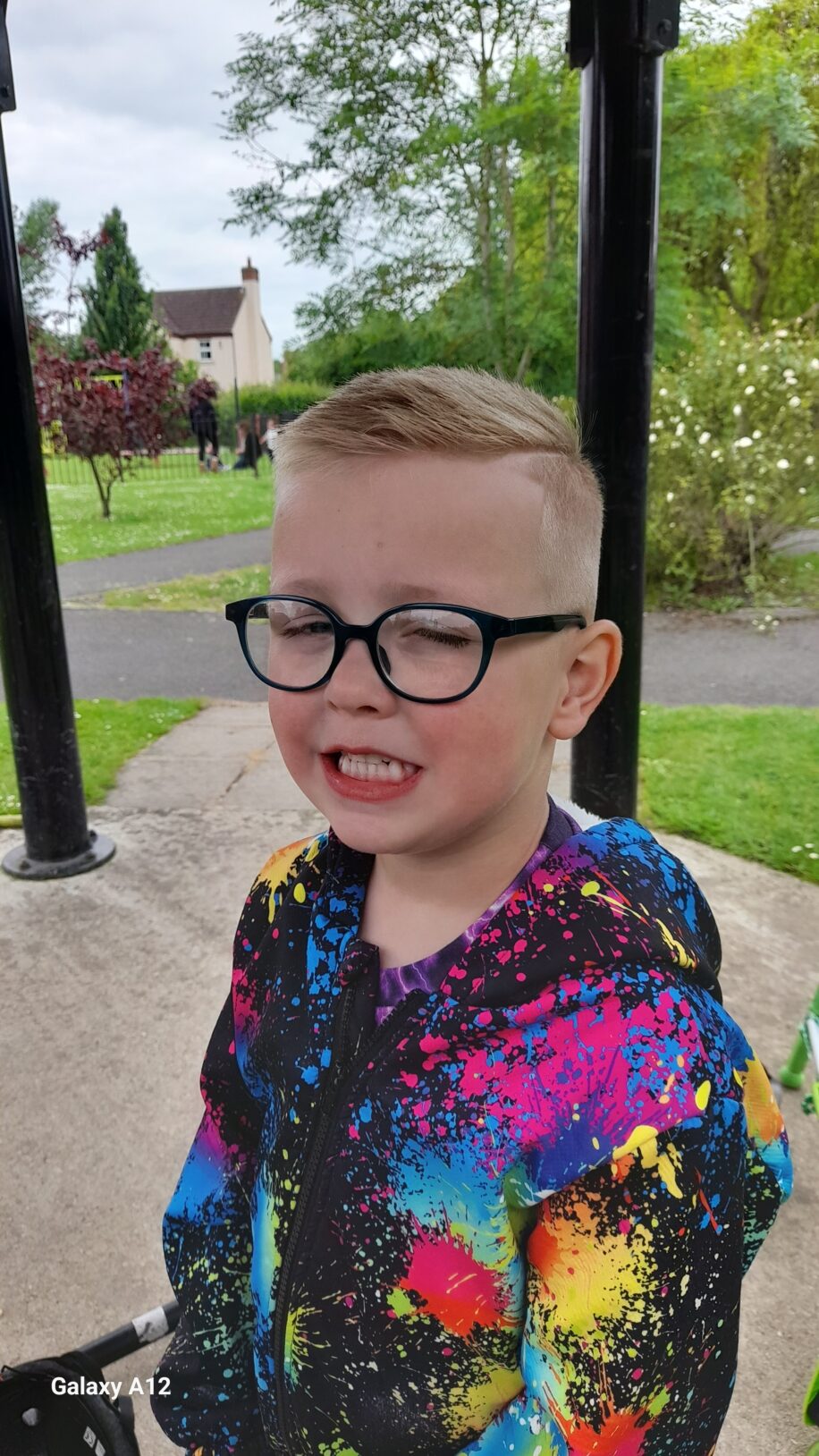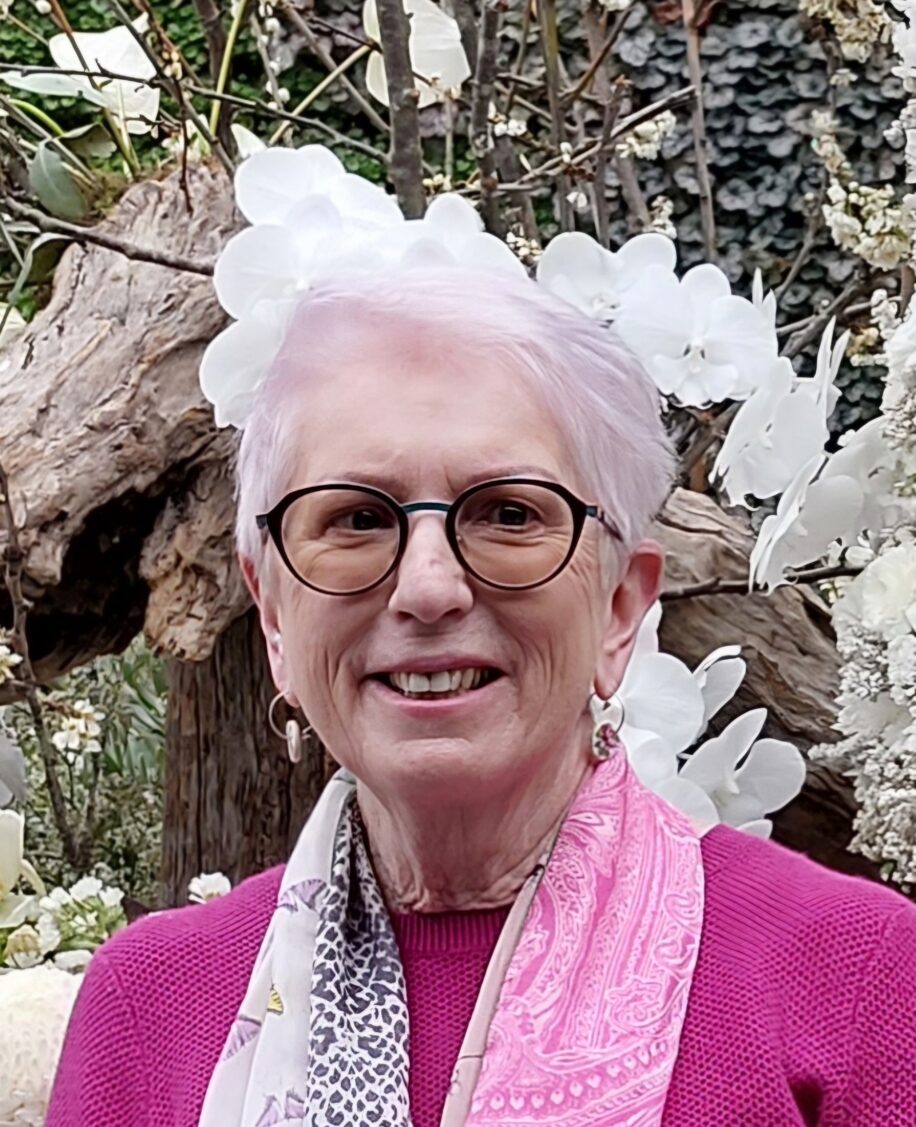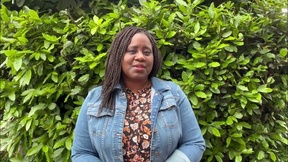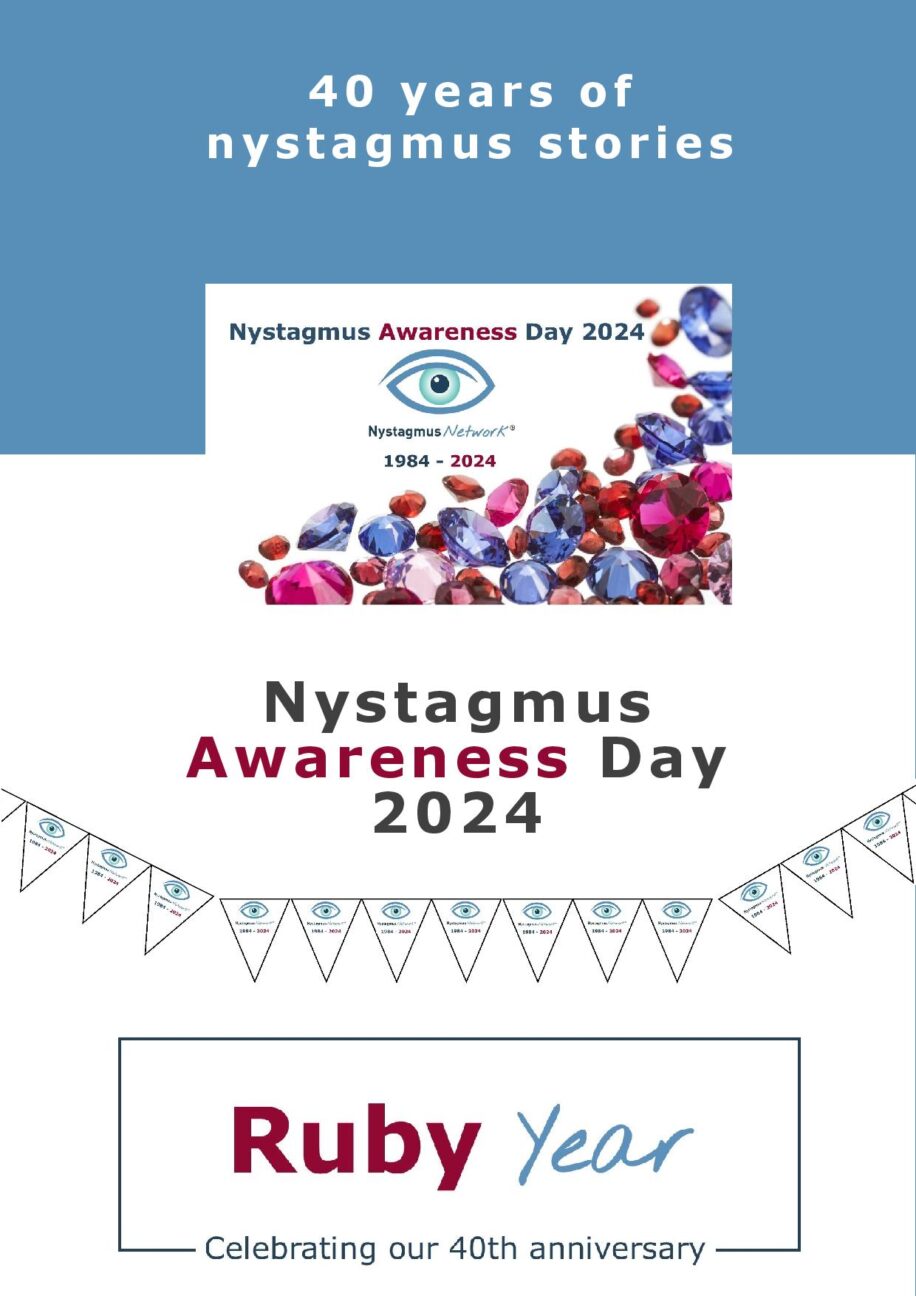I was diagnosed with nystagmus almost from birth and I had glasses from around 18 months. I attended regular state school and struggled to see, however my parents were keen to keep me in mainstream education against the eye specialists advice. I remember going to hospital appointments fairly frequently and my parents had to show examples of my school work to the consultant, to backup their opinion that I should remain in mainstream schooling.
When I was around 6 years old (around 1976) my parents paid for me to have some nicer glasses as opposed to the National Health glasses I had been provided with until them, these were the brown tortoise shell type (which are fashionable now!), they had thin wire for the ear pieces, which after a few hours began to dig into the ears, becoming uncomfortable.
I loved my new shiny golden rimmed glasses, which I felt gave me more confidence. Then one bright sunny day in Norwich, I ran down a hill with my brother into to sun, and for me straight into a bin which was on a top of a post, which I clearly didn’t see. In those days the regular lenses were made of glass, plastic lenses were an expensive addition. Both lenses shattered and I was taken to the Norfolk and Norwich hospital where I remember nurse pouring a salty liquid into my eyes to remove any glass. Thankfully there was no lasting damage, only to my parents pocket to buy new glasses with plastic lenses. Looking back, it was probably the first time when I realised the bright sun had a detrimental effect on me.
By 1984 , I was 14 years old and attending a regular comprehensive school in Gt Yarmouth. I had to always ask to sit at the front of the class so I could see the blackboard. Most teachers after initially questioning me for the reasons were ok but some were just awkward. Sometimes there was not enough textbooks, so we had to share which I always struggled with.
Academically I was ok, the comprehensive system meant that we were placed in group sets according to our ability. There were five sets for each subject with set one being the top set for the brightest group. I was in the second set and holding my own. However, when it came to exams just before Christmas 1984, these were now timed more strictly in preparation for GCE’s and O Levels which would be in the summer of 1986.
I found this really tough and often struggled to finish the exam which meant I did not display my actual potential through no fault of my own. This trend continued until my actual exams where due to my results in the mock exams, I was entered for CSE exams instead of GSE or O Levels which I was actually capable of. The exams didn’t go too well as I struggled to finish the exams in the allotted time. And therefore did not fulfil my true potential.
Following my results, which considering I only finished one of the 10 exam papers, due to not having enough time , I did ok. But I decided I had had enough of education and entered the world of work through the Youth Training Scheme (YTS). This went well and I was offered a full time position after the first year of working in medical records at the local hospital.
I first became aware of the Nystagmus Network following the birth of my daughter in 1997. From the first moments of seeing her we realised she also had Nystagmus. There was lots more support around by then and I remember the wobbly eyes book and the teddy bear with wobbly eyes too which we had for her.
At school my daughter had support from day one from the Local Education Authority. When it came to her exams and GCSE’s and later A levels and degree she always had 100% extra time to complete the exams. She achieved a First Class Honours degree in nursing and has worked as a nurses since then.
I eventually ended up becoming a civil servant where I’ve have worked for 24 years, doing various roles and gaining promotions. However, the road has not always been a smooth ride, as I’ve occasionally had to explain why I cannot complete as much work as my peers. Thankfully, things are improving with reasonable adjustments and assistive technology.
I have always enjoyed playing sports, and spent many years playing squash and badminton until my ankles would not allow anymore. I have always used a bicycle since being a child and I still use it to ride to work and my main mode of transport. After the end of my racquet sport days, I began to cycle more and this became my main participation sport, however I realised in 2019 that I did not feel as safe cycling 50 or 60 miles on the roads, so I began running and doing parkruns.
Primarily, I wanted to give something back as I had had some eye vision issues which resulted in bad eye strain caused by my job and computer screen.
The 2019 Nystagmus awareness week, parkrun were supporting the Nystagmus Network, so my aim was to to get running fit to be able to run the local parkrun on 22 June 2019 in the NN running vest, raise a bit of money for NN and quit running as I didn’t really like it.
Mission accomplished and awareness was raised of nystagmus with friends and colleagues at my workplace. The following week after I had quit running, I was again on the start line of the parkrun. And that’s where I have been for the majority of Saturdays at 9am since ( excluding the lockdowns).
To date I have completed 179 parkruns at 39 different locations, one in Denmark. I’ve completed numerous 5km races and this year I did my first 10km race in Gt Yarmouth and was happy to finish in under an hour. This year, I also competed the Gt Yarmouth 5 mile series for the 3rd year running, this is three 5 mile races over a six week period.
Apart from parkruns and the races, I tend to run on my own, in places I am familiar with, however I do like travelling to different parkruns ( luckily my partner drives and also likes to go to parkruns) and having a look around the local area afterwards. I’m always a little apprehensive of running in new places, especially the off road parkruns where there are often tree roots to avoid, so I am always conscious to be more careful at these places. I also am not too keen on really busy parkruns, some have 400 + people, again I am always a bit more wary when at these events. The low sun is also a problem sometimes too.
I think running is good for me, and the parkrun community is very friendly and supportive wherever I have been, however, I’m still not sure if I really like running!


